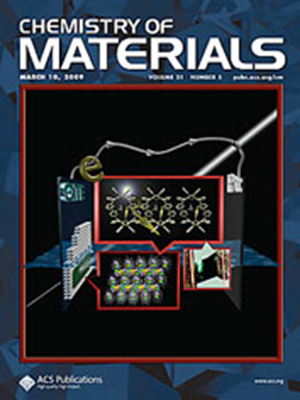Electrolytomics: A Unified Big Data Approach for Electrolyte Design and Discovery
IF 7.2
2区 材料科学
Q2 CHEMISTRY, PHYSICAL
引用次数: 0
Abstract
Electrolyte discovery is the bottleneck for developing next-generation batteries. For example, lithium metal batteries (LMBs) promise to double the energy density of current Li-ion batteries (LIBs), while next-generation LIBs are desired for operations at extreme temperature conditions and with high voltage cathodes. However, there are no suitable electrolytes to support these battery chemistries. Electrolyte requirements are complex (conductivity, stability, safety), and the chemical design space (salts, solvents, additives, concentration) is practically infinite; hence, discovery is primarily guided through trial and error, which slows the deployment of such next-generation battery chemistries. Inspired by artificial intelligence (AI)-enabled drug discovery, we adapt these machine learning (ML) approaches to electrolyte discovery. We assemble the largest small molecule experimental liquid electrolyte ionic conductivity data set and build highly accurate ML and deep learning models to predict ionic conductivity across a wide range of electrolyte classes. The developed models yield results similar to those of molecular dynamics (MD) simulations and are interpretable without explicit encoding of ionic solvation. While most ML-based approaches target a single property, we build additional models of oxidative stability and Coulombic efficiency and develop a metric called the electrolyte score (eScore) to unify the predicted disparate electrolyte properties. Deploying these models on large unlabeled data sets, we discover distinct electrolyte solvents, experimentally validate that the electrolyte is conductive (>1 mS cm–1), stable up to 6 V, supports efficient anode-free LMB, and even LIB cycling at extreme temperatures. Our work marks a significant step toward efficient electrolyte design, accelerating the development and deployment of next-generation battery technologies.

求助全文
约1分钟内获得全文
求助全文
来源期刊

Chemistry of Materials
工程技术-材料科学:综合
CiteScore
14.10
自引率
5.80%
发文量
929
审稿时长
1.5 months
期刊介绍:
The journal Chemistry of Materials focuses on publishing original research at the intersection of materials science and chemistry. The studies published in the journal involve chemistry as a prominent component and explore topics such as the design, synthesis, characterization, processing, understanding, and application of functional or potentially functional materials. The journal covers various areas of interest, including inorganic and organic solid-state chemistry, nanomaterials, biomaterials, thin films and polymers, and composite/hybrid materials. The journal particularly seeks papers that highlight the creation or development of innovative materials with novel optical, electrical, magnetic, catalytic, or mechanical properties. It is essential that manuscripts on these topics have a primary focus on the chemistry of materials and represent a significant advancement compared to prior research. Before external reviews are sought, submitted manuscripts undergo a review process by a minimum of two editors to ensure their appropriateness for the journal and the presence of sufficient evidence of a significant advance that will be of broad interest to the materials chemistry community.
 求助内容:
求助内容: 应助结果提醒方式:
应助结果提醒方式:


